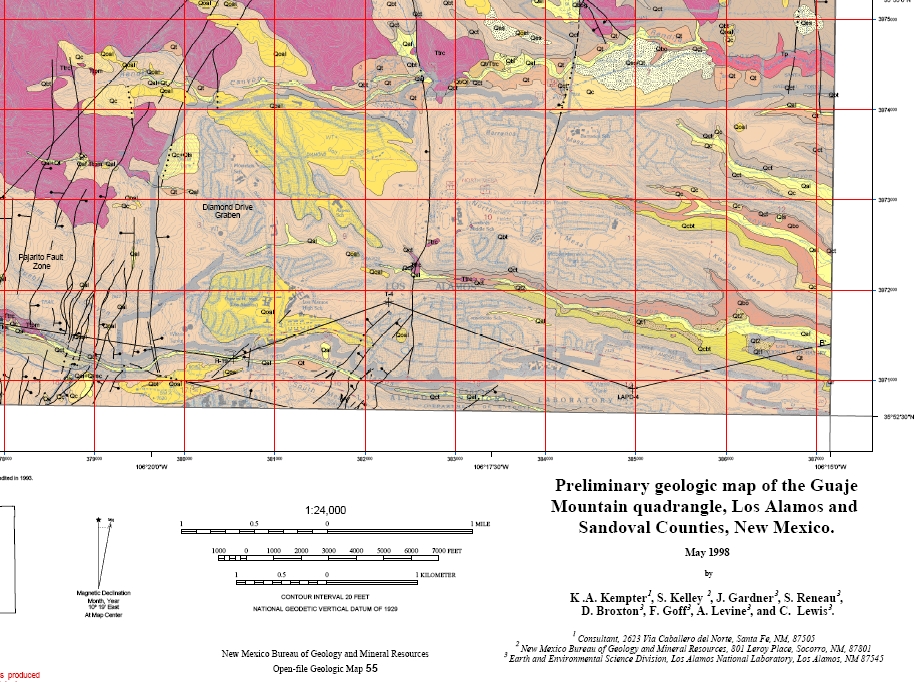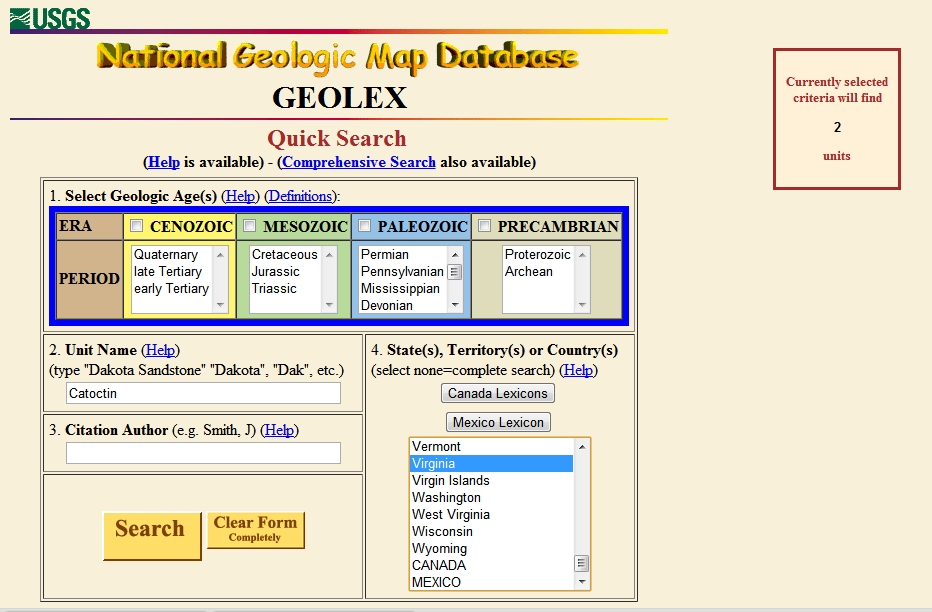22 June 2011
Archival Gold: USGS National Geologic Map Database
Posted by Jessica Ball
Time for another of these, since I haven’t done one in a while! This Archival Gold post departs a bit from the photo theme, but it’s no less useful – in fact, it was one of the most useful websites I ever encountered as an undergrad. The U. S. Geological Survey’s National Geologic Map Database contains records of, and often links to, more than 85,000 maps related to a variety of subjects: geology, hazards, earth resources, geophysics, geochemistry, geochronology, paleontology, and marine geology.

Excerpt from Kempter, K.A. and Kelley, S., 2002, Preliminary geologic map of the Guaje Mountain 7.5 minute quadrangle, Los Alamos and Sandoval counties: New Mexico Bureau of Geology and Mineral Resources, Open-File Geologic Map OF-GM 55, scale 1:24000.
You can search the maps by map location, place name, subject, author, title, date, and a number of other criteria. And when you get your results, you’ll often find maps available online in PDF or GIS form.

Excerpt from Roggensack, Kurt and Jenness, J.E., 1984, Map showing outcrops of pre-Quaternary ash-flow tuffs and volcaniclastic rocks, Basin and Range province, Utah: U.S. Geological Survey, Water-Resources Investigations Report 83-4122-F, scale 1:500000.
In addition to the maps, you can search for information on any geologic unit – by name, age, location, rock type – pretty much anything, using the GEOLEX lithologic and geochronologic unit name database.
The Map Database is a great resource for finding modern and older maps – especially useful if you’re doing some detailed mapping in an area, and want to see what interpretations other researchers have made of the landscape. (You can’t beat direct links to digital maps, and detailed references to those that are only available on paper.) And GEOLEX will give you the whole naming history and usage of pretty much any geologic unit you can think of, as well as the state the unit crops up in (and whether the name varies from state to state).



 Jessica Ball is a volcanologist at the U.S. Geological Survey, researching volcanic hydrothermal systems and stability, and doing science communication for the California Volcano Observatory. She previously worked at the Geological Society of America's Washington DC Policy Office, learning about the intersection of Earth science and legislative affairs. Her Mendenhall postdoc and PhD focused on how water affects the stability of volcanoes, and involved both field investigations and numerical modeling applications. Her blogging covers a range of topics, from her experiences in academic geosciences to science outreach and communication to her field and lab work in volcanology.
Jessica Ball is a volcanologist at the U.S. Geological Survey, researching volcanic hydrothermal systems and stability, and doing science communication for the California Volcano Observatory. She previously worked at the Geological Society of America's Washington DC Policy Office, learning about the intersection of Earth science and legislative affairs. Her Mendenhall postdoc and PhD focused on how water affects the stability of volcanoes, and involved both field investigations and numerical modeling applications. Her blogging covers a range of topics, from her experiences in academic geosciences to science outreach and communication to her field and lab work in volcanology.
Thank you for sharing this! As an undergrad geography student, I know I’ll be referencing it often.